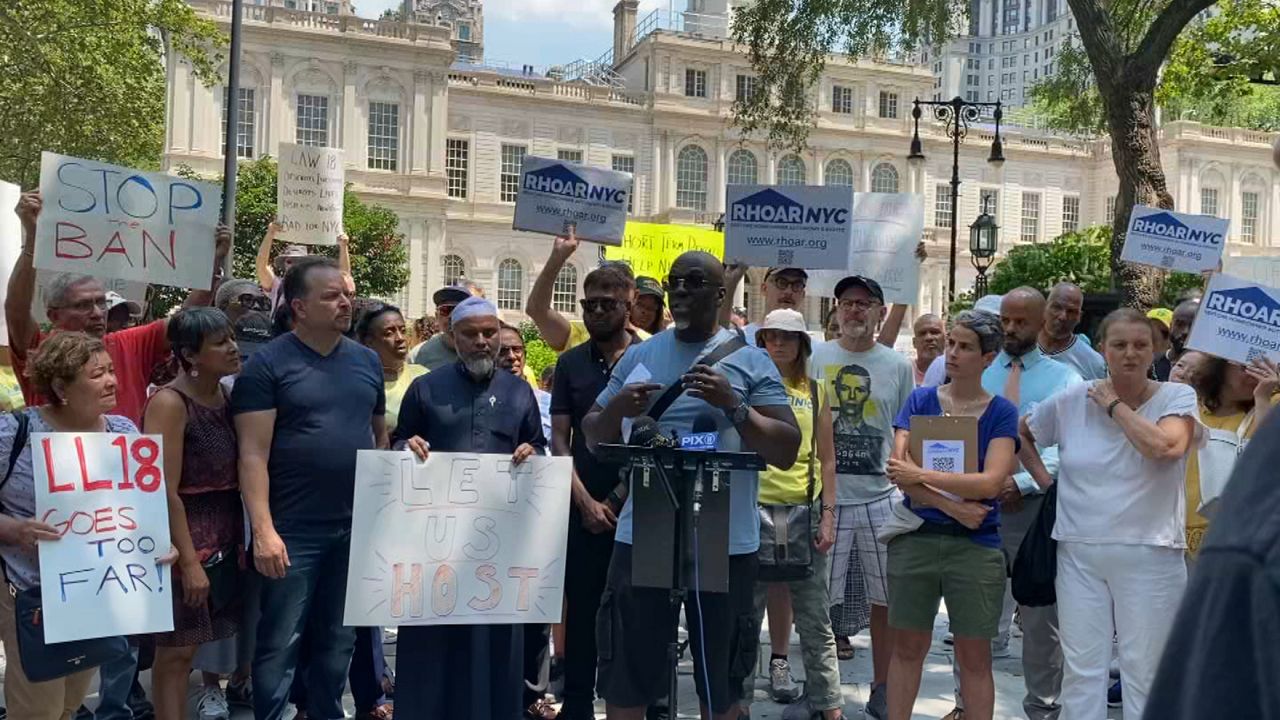More office buildings in New York City are in financial trouble, despite more people returning to in-person work.
The delinquency rate for Manhattan office buildings has gone from 0.57% in January 2023 to 6.28% in January 2024, according to data tracked by the firm CoStar, which shares commercial real estate information, analytics and news.
Since 2019, this is the longest period of time that the delinquency rate has been increasing. The highest rates were 9.18% in February 2021 and 10.91% in March 2021. But by April 2021, it was back down to 1.25%.
What You Need To Know
- The delinquency rate for office buildings in New York City has increased more than 1,000% from January 2023 to January 2024, according to data
- The vacancy rate of office buildings in Manhattan remains over 20%
- Lenders are calling architects, asking about properties they have taken control over or ones that could soon be in their portfolio
The delinquency rate increasing can mean many possibilities for the future of these office buildings.
Even though more people are returning to the office, the vacancy rate of offices remains high. In fact, Manhattan's was 22.8%, according to the latest data from the commercial real estate firm Cushman & Wakefield.
“There’s a great deal of vacant real estate right now,” said Stuart Saft, a real estate lawyer and partner at the Holland & Knight law firm.
Saft has spent decades representing developers and lenders. And now, he hears consistently from clients about how their office buildings have fewer tenants.
That means less money coming in. And it comes at a time when the commercial real estate loan interest rates are much higher than they have been in recent years.
So for the hundreds of billions of dollars in office loans needing to be renewed this year, the building owners have difficult decisions to make.
“There’s a great deal of debt on these office buildings that’s coming due this year and in 2025 and the concern is, what do we do?” Saft said.
Delinquency can mean a range of things, from missed loan payments to foreclosure. The final part of that can mean building owners are forced to hand over the keys to their lenders.
“The last thing a lender wants is [real estate owned]," Saft said.
Lenders are reaching out to Saft, worried about their office buildings ending back in their hands.
Robert Fuller from the architecture firm Gensler is also getting calls from concerned lenders.
“To say this is a building we think is going to be or is in distress,” Fuller said.
One of the most popular possibilities is office to residential conversions. New York City has 2,609 apartment units being converted, according to the apartment search platform RentCafe.
Joseph Pell Lombardi has been an architect in New York City for 50 years. He says that in the past year, about 10 different lenders have called him with questions about their office buildings. And this, he said, is extremely unusual.
“It’s an indication there’s something very strong going on in our cities right now,” Lombardi said.
The struggle for some could be opportunity for others.
Over the summer, Spectrum News NY1 spoke with then-Silverstein Properties CEO Marty Burger. That company had launched a $1 billion fund to focus specifically on the conversion of empty office space to housing. He specifically said buildings in foreclosure are ones they would potentially target to acquire.
“Looked at 3,200 buildings in New York City and came up with 218 that fit the criteria that we think is necessary for a conversion. And a lot of those fall into that category,” Burger said.
So big decisions lie ahead. Billions of dollars are on the line.
“In every crisis there are opportunities,” Saft said.
But Saft cautioned that some people interested in converting buildings cannot do so. That is because of the way the city's zoning laws are written.
In fact, Saft told NY1 he has had clients he told could not consider a conversion due to zoning restrictions.
Mayor Eric Adams has released proposals to change zoning to allow for more of these projects around the city, but nothing has happened yet.


?wid=320&hei=180&$wide-bg$)


 Pkg CC NYCHA Hearing CG)

